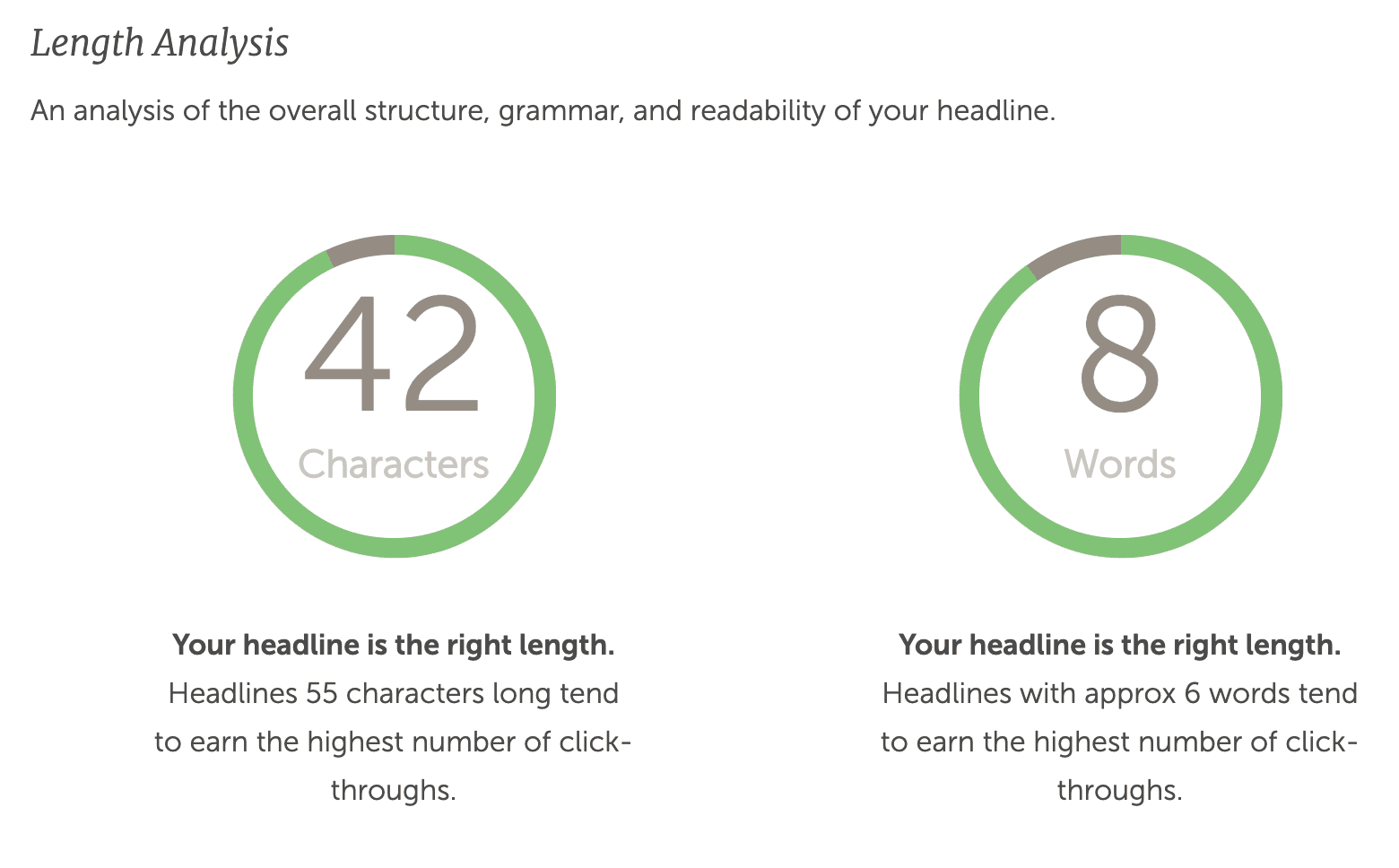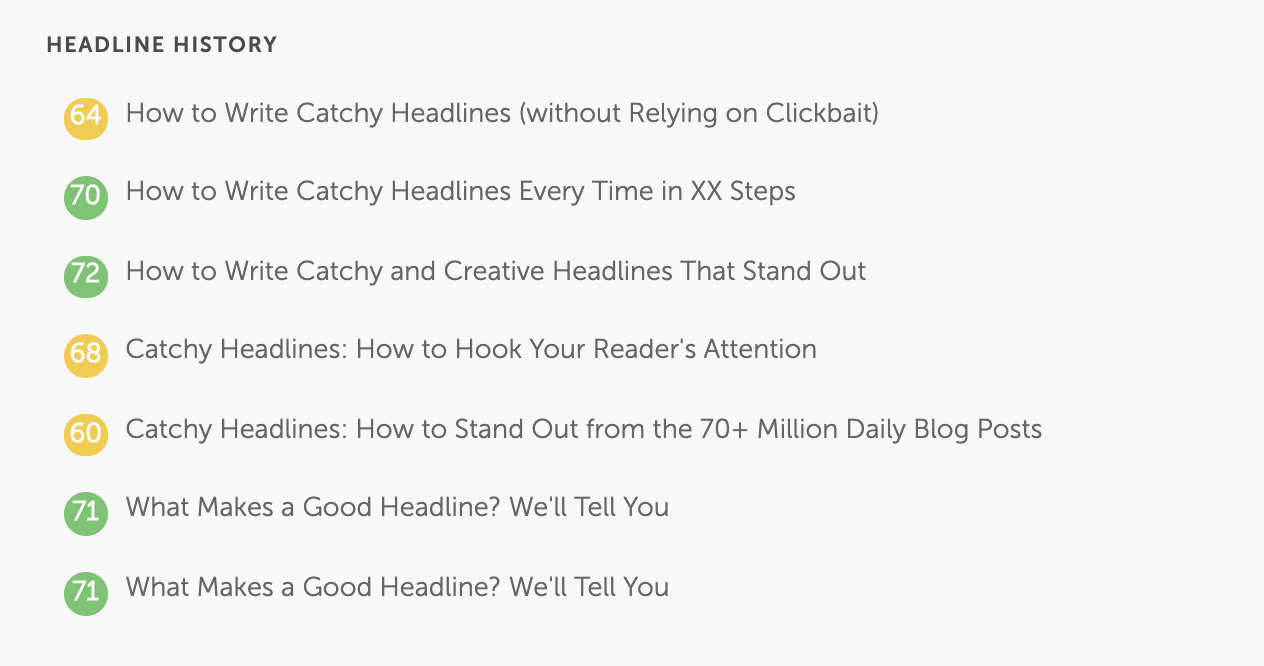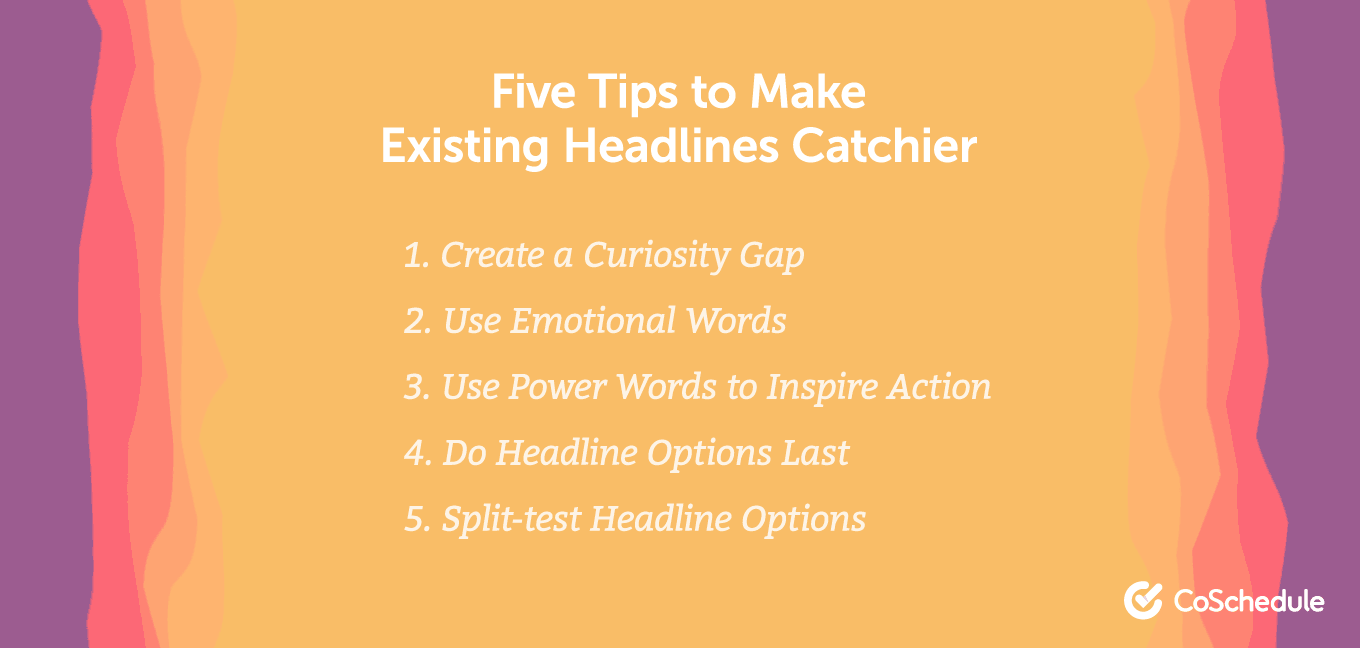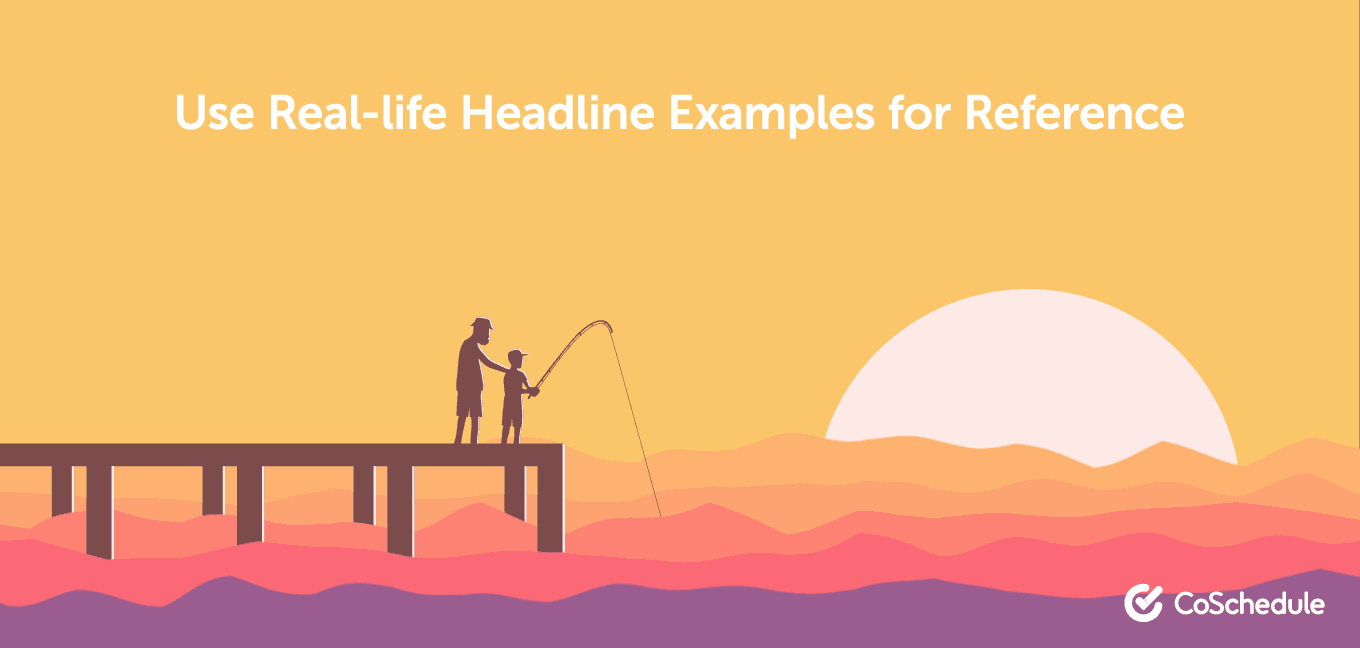People are bombarded by content on the internet. Over 70 million new posts are published every day on WordPress alone, and the average blog post has 1,150 words.
The hardest thing about writing blog posts isn’t the content itself, though.
It’s the headline — something that needs to grab a reader’s attention immediately, and click through to read the content you’ve spent so long writing. You could be wasting over 3 hours on every blog post you create if the headline isn’t catchy enough.
Your best bet for success is to read this post on how to make your headlines as catchy and attention-grabbing as possible… without resorting to clickbait.
Ready? Let’s get to it.
Get More Traffic, Clicks, and Shares With These Resources
Download this trio of templates and tear sheets to write your best headlines every time:
- 180 Emotional Words for Headlines: Searching for the right words to add emotional power to your headlines? Use this simple tear sheet as a reference.
- Catchy Blog Titles Infographic: Packed full with templates, word suggestions, statistics, and more to write better article titles.
- Editorial Calendar Template: Plan every headline you’ll publish all in one place.
What Makes Headlines Catchy?
Catchy headlines are those that really grab your attention.
With so much content being published each day, each with its own headline, let’s take a look at three qualities which make a headline truly stand out:
- They’re concise. Our data shows that 60-100 characters is the optimal headline length. Any shorter, and it’s not big enough to stand out. Any longer and people probably won’t read it.
- They’re unique. With so many blog posts published daily, what makes yours stand out? A unique headline helps you differentiate your content from the rest.
- They’re emotionally driven. Emotional headlines get more social shares. More shares means more people seeing and clicking through to your content.
How to Write a Catchy Headline
Now we know what makes a headline catchy and memorable, it’s time to start creating your own.
Regardless of whether you’re writing the headline for a blog post or Facebook Ads campaign, follow this three-step guide to creating a headline that stands out.

Find the Problem
The first step to writing a catchy headline is to be crystal clear on the problem your ideal reader is struggling with.
This is usually defined during the writing stage; when you’re writing the bulk of your content.
Every piece of content should be based around something your reader is struggling with. Also known as a pain point, it’s the reason why they’ll come to your website. They either want advice, to be educated, or to be entertained.
You can find this out by asking questions, like the below through survey or customer analysis:
- What pain point do they struggle with? (e.g. finding time to shop for clothes)
- Where do they go to find that information? (e.g. Google)
- How might that issue make a person feel? (e.g. frustrated and annoyed)
The answers to all three questions are the perfect way to make your headline catchier.
You can use them to make a boring headline 10 times more interesting simply by adding a catchy phrase relating to your customers’ pain points on the end.
For example, “How to Do X” can have the following tagged on the end:
- Without Losing Your Mind
- Without Scheduling a Day-Long Shopping Trip
It helps your readers self-qualify for whether they should click through. You’re also making it uber-relevant to them; they see themselves in the headline. You’re promising a solution to them via your headline.
Identify Content’s Uniqueness
Once you know your reader’s pain point, it’s time to identify how that content is unique, or how a headline may provide a unique framing for it to stand out from the millions of blog posts published daily.
Think about it. Why should they pick your headline over another?
Start tapping into this by questioning what makes your content/ad/article different from existing resources on that topic or product.
You can’t do that without knowing your competition, so head to Google or whatever place you’re publishing the content (e.g Facebook Ads library), and review existing headlines around the topic.
Think about:
- The format they’re using.
- Whether they’re using numbers.
- The “thing” they’re promising to a reader (e.g. education or entertainment).
How can you add your own spin to the “norm” content published to that platform?
Then, spend some time understanding your content’s introductory hook. Your catchy headline should feed into the introduction of the content itself.
Clickbait — tricking a reader into reading content that’s totally different from the headline — doesn’t always work, and it can look spammy. Try to make your headline a natural introduction to your content.
Write 20 to 25 Headline Options
It’s not uncommon to write one headline and stick with that from beginning to end, but having a range of headlines helps you continue building on it to find the best one. It’s why conversion copywriter and expert, Joanna Wiebe, recommends writing at least 25.
Before settling on the first headline you write, spend some time testing different options.
The Headline Analyzer Studio is your best friend, here. It scores your headline out of 100, based on various factors that make a strong headline.

Remember how we said the criteria of a catchy headline is concise, unique, and emotionally driven?
Pay special attention to the word balance section, which shows a percentage breakdown of the strong words your catchy headline includes. The more uncommon, emotional, and power words you use, the higher your headline score will be.

The best part about the Headline Analyzer Studio, is that it keeps track of all the headlines you’ve written, along with their scores.
You can scan back through your list of catchy headlines, and see which had the highest rating.

Five Bonus Tips to Make Existing Headlines Catchier
We know the step-by-step process of writing catchy headlines, but what about the headlines you’ve already written — either for the backlog of blog posts on your website or your YouTube videos that aren’t convincing enough people to watch?
Here are five simple tips for making your existing headlines catchier.

Create a Curiosity Gap
There are tons of tactics you can use to make your headline more intriguing.
The curiosity gap is the perfect example. It works by stating the problem your reader is suffering with, while implying reading the content is the best (or only) way to solve that problem.
Let’s take a look at how an existing headline gets much catchier with a curiosity gap:
- How to Write a Blog Post
- Are You Missing Out on This Hack for Writing Incredible Blog Posts?
Which are you more likely to click? I’ll bet it’s option #2 — the one with the curiosity gap that makes you want to read the content.
Use Emotional Words
We’ve already mentioned that emotional words are crucial to making catchy headlines, but you can still spice up an existing headlines by adding a handful of emotional words.
Some examples are:
- Wonderful
- Worry
- Valuable
- Secrets
- Magic
Each of those words makes you feel something when you read it. That’s what a catchy headline does well.
Use Power Words to Inspire Action
Similar to emotional words, powerful words can entice your readers into clicking your headlines. That’s because powerful words inspire the reader to take action.
Some examples are:
- Ultimate
- Strong
- Easy
- Now
- Reveals
Do Your Headline Options Last
The standard process for writing content is to draft a headline, write the draft, and hit publish. However, writing your headline first can actually be detrimental to how catchy it is to your ideal readers.
Why? Because if you’re writing the headline first, you don’t have a crystal clear picture of what your content is about.
It could fall into clickbait territory, and that’s not what anybody wants to read.
Instead, draft the content first and the headline last. You’ll know exactly what your content is about, and you can write a catchy headline that feeds into the introduction perfectly.
Split-test Your Headline Options
Split-testing is a common marketing principle that compares the success of two different things. The aim is to see which variation gets the better results. You can apply that to your headlines, too.
Take the list of 20+ headlines you’ve drafted earlier, and whittle it down to a handful with the highest scores.
Then, run a split-test to determine which performs best with your audience.
For example, you can draft two email subject lines and split your audience down the middle; the first half gets the first headline, and the second gets the other. The headline with the most opens was the catchier version.
Most email providers offer a split-testing feature to help with this.
This gets a bit trickier with other types of content, like blog posts or YouTube videos, since you can’t test both headlines at once.
Instead, you’ll need to give each headline time to gather results. After that time period has passed, monitor how many people have clicked through.
Then, change the headline to your second option. Allow the same time period and do your promotion exactly the same. Check how many people clicked that piece of content with headline #2, and you’ll see which won the test.

Six Catchy Headline Examples and Why They Work
Before you head off to write catchy headlines, let’s take a look at seven, real-life headline examples you can draw inspiration from.
- Marketing Operations: The Start to Finish Guide for Busy Managers: This could’ve been a boring headline, like “How to Do Marketing Operations” or “What is Marketing Operations?”. Instead, it plays on the audience and their pain point: not having enough time. It also adds the term the reader used early in the headline to make it clear that the content is exactly what they’re looking for.
- Prove You’re A “Harry Potter” Fan By Checking Off At Least 17/25 Things On This List: This headline doesn’t follow a specific template, but it uses the curiosity gap to make your click through. The power word “prove” also implies that someone needs to do something, rather than just scroll past.
- How to Centralize Your Tasks When You’re Using Too Many Apps: The audience’s pain point is using too many apps and not knowing where their task list is. This headline aggravates that pain point and promises the content is a solution.
- A Brand’s Guide to Unsplash: How to Unlock the Next Big Visual Marketing Channel: Powerful words, like “unlock,” make this how-to headline more catchy. Adding the fact that the channel is the “next big visual marketing channel” also makes it more interesting to read. By not clicking through, you’ll feel like you’re missing out.
- What is Content Marketing and How to Crush It on a Tiny Budget: This is a YouTube video headline. The main content is around the definition of content marketing, but they also know their audience are beginners, so they’ve added “on a tiny budget” at the end. It’s something their audience are struggling with.
- Fans agree, half baked ice cream is perfection: This headline is from a Facebook Ad by Ben & Jerry’s. It uses emotional words, like “perfection,” and peaks curiosity using the fear of missing out technique. If other people enjoy it, you will, too.
Master Your Headlines Every Time
There’s no doubt that writing catchy headlines takes time.
It’s not enough to write one headline and settle with that for your content’s lifespan. A poor headline means people won’t click through. The content you’ve worked so hard to produce goes to waste.
Take some time to go through the process of writing catchy headlines, and make your existing ones even better. You’ll soon see that a catchy headline gets more views, shares, and people to your site.

